John Howell asked if someone could explain why a Mobile Control Room is called a Scanner.
Alec Bray
Why are the OB units called “scanners”?
Way way back in the 1960s, I was given to understand that the term “scanner” came about this way …
The Baird system used pick up devices which were not sensitive enough to use normal (day)light on outside broadcasts, But without outside broadcasts, it was unlikely that Television would achieve mass coverage. A system was devised which used an intermediate film. That is, a normal film camera shot the scene, then the film dropped though developer, wash and fixer, and then immediately through a flying spot telecine machine, which, of course, “scanned” the picture.
There was, of course, a delay between the filming of the event and its transmission – could be a minute or so (consider this in terms of today’s digital delays!) Due to improvements in pick up tube development and move to full electronic rather than part-mechanical television picture generation, the intermediate film system fell into disuse.
Anyway, for about 5 years – 1932 to 1937 – right at the start of outside broadcasts – vehicles fitted with this intermediate film system were used to transmit OB events, the flying spot scanning TK giving rise to the name “scanner”.
…
However, I was only ever in the Studios (except for one lone, one day loan visit to Wimbledon!).
Dave Denness
That is the system I was always led to believe caused the term ‘scanners’ There was another leg to the same story in that Pathe News and other film newsreel services objected strongly to the BBC transmitting ‘Live’ news pictures, so the scanner method was used.
Tony Crake
I found a bit of BBC TV News with John Trenouth explaining the 3 early systems
http://www.bbc.co.uk/news/entertainment-arts-15554897
Graeme Wall, Geoff Fletcher, Roger Bunce
I was told that the original MCRs were converted from ex military mobile radar scanners. In the RAF mobile radar units were called “scanners” as were mobile mortar tracking radar units as used by the RA. Mobile radar vehicles were called “scanners” because of those rotating (scanning) aerial thingies on the roof.
(Click on the sbelow to see a larger or clearer version of the picture:
Click the “X” button (top right) to close the newly opened picture.)
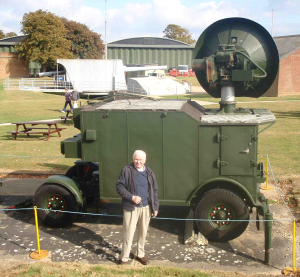
Here’s one such vehicle being used to track weather balloons in Aden in 1958.
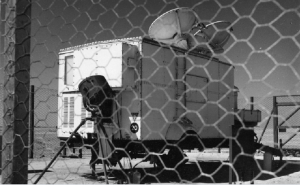
Tony Crake
Scanner explanation ..
(Click on the pictures below to see a larger or clearer version of the picture:
Click the “X” button (top right) to close the newly opened picture.)
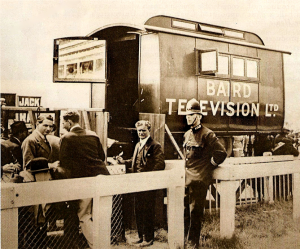
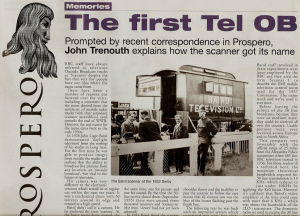
These pictures featured in a talk I gave about the BBC!
Pictures from an article in “PROSPERO” about 2 years ago (ie. 2013)
John Howell
That was the explanation I had in mind. Years ago I went with the radar theory as the links dishes looked like radar scanners. Then I came across the attached picture in “The Wonder Book of Electricity”, looks like it’s from the same photo shoot!
(Click on the picture below to see a larger or clearer version of this picture:
Click the “X” button (top right) to close the newly opened picture.)
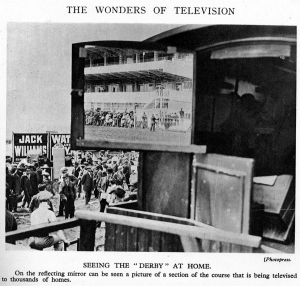
Dave Plowman
I always remember a press article on “The Bill” when it went weekly in the 1980s. It was one of the first dramas made using a single electronic camera.
The journalist had obviously been told it no longer used a ‘scanner’ – as had the first couple of series. But he obviously didn’t know what the term meant, so actually wrote “They no longer did scanning.”
Bob Auger
The intermediate film project did not end with the rejection of the Baird system in 1937.
In the mid 1980s I met a chap who had worked on the Baird team and he told me that the RAF equipped a reconnaissance plane with an IF system early in WW2.
The idea was that “live” TV images could be sent back to a station on the English coast while the plane was in flight, giving ground controllers an (almost) instant view of the French/Belgian territory. On the flight’s return (hopefully) the film (at much higher quality) could be examined by the Air Intelligence Board.
He even produced a clipping of a few frames, to show how effective it must have been.
It was discontinued in 1940, partly because of the weight penalty of having to carry a complete film lab on the flight!



